Arts & Letters Daily has long been my homepage. Every day it turns up a broad range of mind-boggling material. Two articles caught my interest in the last day or so. The first by a theoretical physicist, whose chums have been whispering about the almighty; the second by a philosopher of science, bemoaning claims by Hindu nationalists of scientific discoveries in the ancient Vedas.
God’s Rays appeared in Physics Today, and was written by the late Bryce DeWitt, an emeritus professor of theoretical physics at Texas University. The last paragraphs especially gladden the heart, but are not pertinent to my comments here.
Meera Nanda’s Intellectual Treason, was published in The New Humanist. The author is a biology graduate, who has taken a brave stand against what she sees as contemporary Hindu fascism. Twenty years ago, while researching a cult leader’s claim to be a nuclear physicist, I read The Dancing Wu Li Masters. Despite its title, and the new-agey feel of Gary Zukav’s other work, this book is a well-written exploration of relativity and quantum mechanics. It did not take long to realize that in centuries past contemporary theoretical physicists could easily have found work as theologians.As a disbeliever in God, I find it disquieting that the mind-wobbling forces at the edge of our possibly saddle-shaped universe should be interpreted as evidence of God. I was heartened to see a similar response to an article by a theologian to this effect published in New Scientist, 27 November 2004 (The Meeting of Religious and Scientific Minds by Keith Ward). The piece drew strenuous criticism from readers who do not believe in such things as ‘sky fairies’ (New Scientist, 11 December 2004, disappearing deity, letters). Keith Ward argued that ‘A theory of everything resonates strongly with the idea of God as a cosmic mind.’ Although I can see that a theory of everything might well make determinations about consciousness as a universal fundamental, the terms ‘God’ and ‘mind’ in that sentence make me feel queasy. They smack of the playdough language of cult philosophy: soft terms adaptable to all needs. Science of necessity demands accurate terms, and God, as posited in the Bible and the Quran, does not seem the likely fundament for which physicists delve. I may, of course, be inundated by a plague of frogs for saying this.
Claims of the relationship between physics and metaphysics go back to Aristotle’s invention of that last term. You can’t have one without the other. Physics deals with the perceivable realm — even when it takes a particle accelerator to perceive, and the perception is only of traces that have to be examined using mathematics; metaphysics deals properly with the philosophy of origins, or ontology, and the first principles of such concepts as being, substance, essence, time, space, cause and identity. (And, yes, I have just looked it up in my Oxford dictionary.) More broadly — and erroneously — metaphysics has come to mean anything that deals with the ‘transcendental’.
Obviously, many great scientists have been devoutly religious: Galilleo, Newton and Faraday are ready examples, and many of the significant names of twentieth century science also espoused mystical beliefs. But this does not make a unified field of their scientific work and their mystical speculation. Physicist Fritjof Capra, popularised the comparison of mystical teachings with contemporary physics in The Tao of Physics. In so doing he enthused New Agers and infuriated many of his colleagues. While comparison can be drawn between scientific principles and vedic, buddhist and taoist literature, I agree with Meera Nanda’s criticism of claims that such literature describes more recent scientific discoveries. It is one thing to point out the Buddha’s idea that matter is divisible into tiny particles, but quite another to imply that he taught string theory or designed a hovercraft. Such claims are aspects of the sacred science, criticised by Robert Lifton in his groundbreaking study of the Chinese Thought Reform camps. Cult leaders seek to add authenticity to their teachings by dubbing them scientific. Often as not, they show no understanding of the scientific method, and have most certainly never subjected their own techniques to double-blind studies.As Meera Nanda points out, such sacred science labels are nothing but labels, and have no substance. Anti-rationalists will pick on any available evidence to claim that they have superior knowledge. The ancient philosophers metaphysical discussions are fascinating, and may be of use in expanding anyone’s range of thinking, but the simple point is that none of them built jet aeroplanes, devised the internet or saw the quarks in a grain of sand. And we have no record in their teachings of the clutch of discoveries that triggered the western Enlightenment — the laws of motion, of optics, thermal dynamics or Newton’s inverse square law of gravity, for instance — let alone the theories of relativity or the Copenhagen Interpretation of Quantum Mechanics.
The Buddha did however put forward a strict injunction that his followers should develop their understanding through experience and consideration rather than through blind faith. One translation of the Kalama Sutta puts it this way:
“Believe nothing on the faith of traditions, even though they have been held in honour for many generations, in many places. Do not believe a thing because many people speak it. Do not believe on the faith of the sages of the past. Do not believe what you yourself have imagined, persuading yourself that some god inspires you. Believe nothing on the sole authority of your masters or priests. After examination, believe what you yourself have tested and found to be rational, and conform your conduct thereto.” [commentary on the Wat Dhammabucha website]
This strand of thought, which is exemplified in the wide-ranging discussion of teachers of various schools in ancient India, could be seen as the origin of scientific reasoning. India at the time of the Buddha was nothing like the heretic burning hell of medieval Christendom — discussion was free and rife. This climate of rational debate, would later contribute the zero to science — surely as important as the discovery of fire and the wheel.
The India of that time has similarities both to China and Greece in the same period. Speculation was running riot. The first major figure in Greek science was also the leader of a religious school. Pythagoras explained fundamental principles of geometry and music. We owe the musical octave to him, as well as his famous theorem of right-angled triangles. The octave is a marvellous example of symmetry in science — and science looks for symmetries, for constants, for invariant laws. So too does mysticism, but shifting metaphors make such laws far harder to discern and to define. Scientific and metaphysical enquiry tend to go hand in hand. This does not make metaphysical speculation in any way scientific, no matter how great the scientific achievements of the speculator. Newton’s attempts to transmute lead into gold, and discover the plan of the Temple at Jerusalem were pseudo-science of the worst order, yet no-one has contributed more to science.
Joseph Campbell pointed out a simple but substantial difference between the Occident and the Orient with regard to spirituality: Judaism and its offshoots Christianity and Islam see God as a separate creator distinct from His creation; eastern traditions see the creation and the creator as undifferentiated: all that lives is an aspect of God. Indeed, in China the fundamental ground of all that exists is not seen as a person at all, but called the Tao. Indian philosophy also reaches back to the ground from which even the gods arose — Brahma. ‘Cosmic mind’ seems to trivialize this insight, turning this ontological mystery into something like a supercomputer. It also imbues the ground with a personality — in the image of Man.
Much of the problem rests in metaphor. It is easy to pick up statements that show logical consistency and relate them to other such statements. Because scientific ideas are often simplified into parables for we poor lay folks, the temptation to take these poetic explanations and compare them with similar mystical or religious parables is immense. But, while metaphor is useful for illuminating insights it is, as the Buddha said, ‘a finger pointing at the moon’ — not the moon itself.
I find it hard to imagine a group of physicists sitting around theorising about the relationship of the God of the Old Testament to the origin and perpetuation of the universe. It does seem, forgive me, like expecting a gift at Christmas from Santa at the North Pole. That same God seen through the minds of the occasional Jewish, Christian or Sufi mystic is more acceptable — but usually because their metaphors point to something beyond human reason. As Meister Eckhardt so succinctly put it, ‘Anything that can be said about God will not be true.’
It seems most likely that the physicists are simply touching the mysterious nature of causation, rather than avidly drawing comparison with the Book of Numbers. And they would probably be better off reading The Upanishads or the Tao Teh Ching to find metaphors for the astonishing origins, integration and perpetuation of this overwhelmingly wonderful universe.January 2005
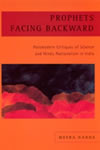
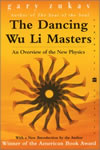
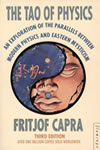
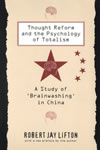
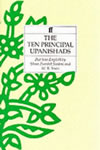
.jpg)
.jpg)
